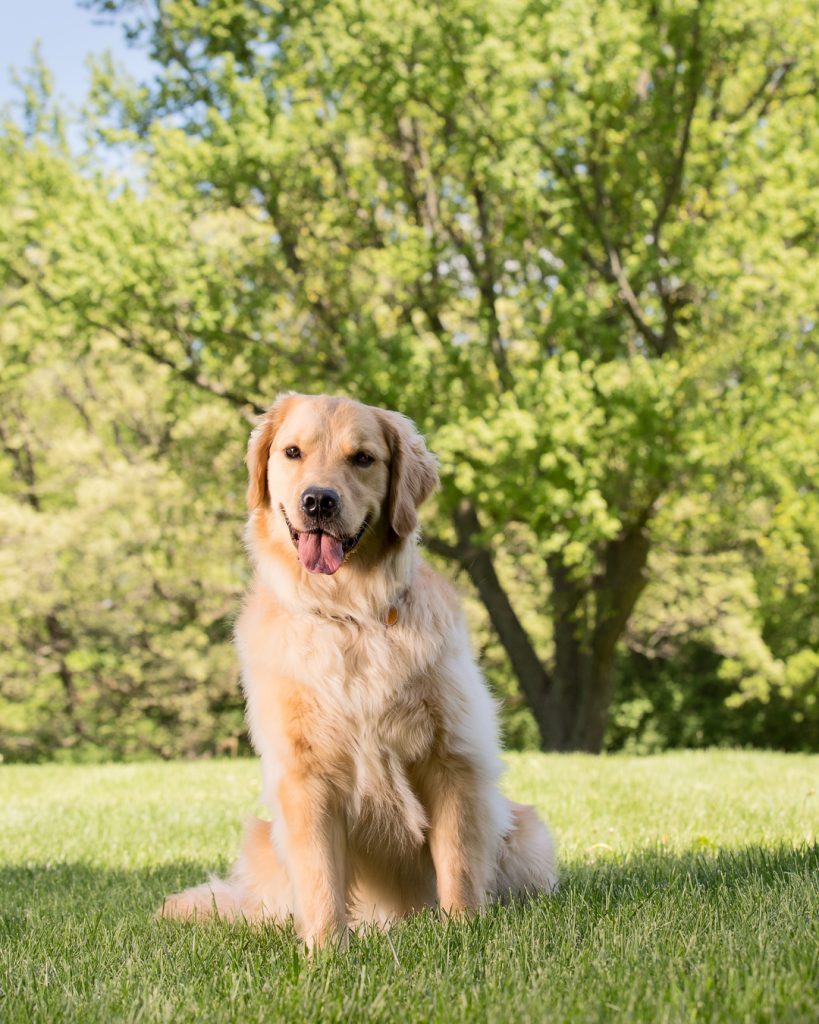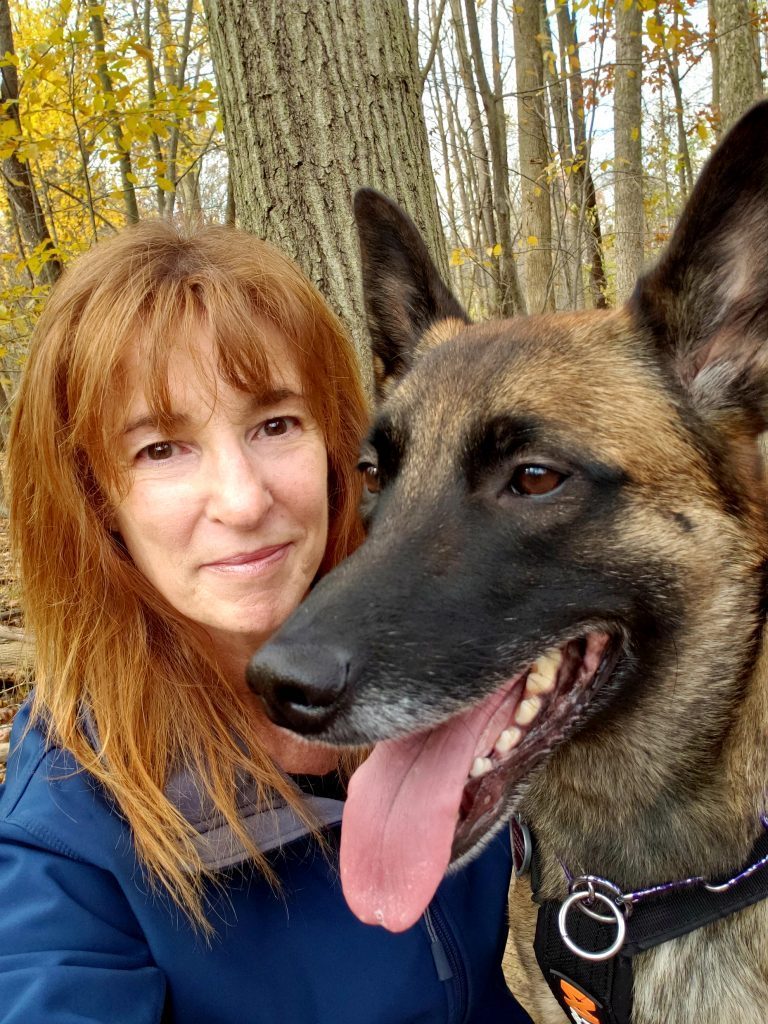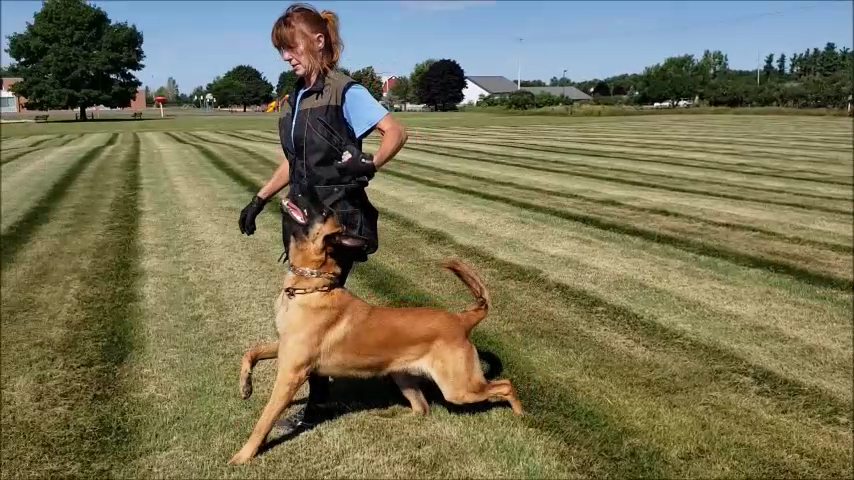guest post by Angie Falcsik, CNWI, CCAS
Pawsitive K-9 Obedience
Professional K9 Trainer
Certified Canine Athlete Specialist
Certified K9 Nose Work® Instructor
Do you know how to prevent injuries in your companion dog?
When many of us hear the term “canine injury prevention”, we typically think about sport and/or professional working dogs.
However, it is not only our sport and working dogs that get injured during activities. On any given day, I see many people sharing on social media or hear people talking about how their companion dog was injured while playing ball, Frisbee, with another dog, or even jumping off the couch! And the injuries are serious, ranging from shoulder, knee, hip, neck, muscle, or ligament injury. It happens in the blink of an eye and usually when our vet’s office is closed or has a full day of patients, leaving you to make an expensive trip to the emergency clinic.
How many times have you been out playing fetch with your dog only to see him run at full speed and either slam into the ground to grab the ball or skid past the ball before they are able to turn around, retrieve it and come back to you? Or that Frisbee throw that didn’t quite go the way you had planned and went too high in the air but your dog jumped for it anyway, twisting as she landed.
And those of us who have multiple dogs or dogs who love to play with their canine buddies love watching them run and chase each other, sometimes at a very fast speed, making quick turns, or even sometimes crashing into each other when playing outside.
How minor injuries can lead to more serious injury
These everyday activities that our companion dogs engage in and love to do, can also put our dogs at risk for injury.
We may not see an immediate injury early on, but over time, if we are not careful, small tears and/or strains that happen more often than people realize can begin to occur as minor injuries and turn into a major injury very quickly. These can be quite painful for a dog and result in a long rehab process.
Many people will say, “Oh, my dog isn’t injured. He still goes out to play ball with me.” Dogs are very good at hiding pain and at compensating for injuries, especially our very active companion dogs!
Ask your dog to sit
 If you ask your dog to sit and look at their rear legs, are they tucked under their body with their toes facing their front legs? Or, is one or both rear legs splayed out, and/or does your dog rest on one hip? Are their front legs even with each other, facing forward and directly under their shoulders?
If you ask your dog to sit and look at their rear legs, are they tucked under their body with their toes facing their front legs? Or, is one or both rear legs splayed out, and/or does your dog rest on one hip? Are their front legs even with each other, facing forward and directly under their shoulders?
If your dog’s rear legs are splayed, front legs offset or toes pointed out or she sits on one hip often, chances are your dog has at one point in time, suffered a minor injury. Of course, it could be a learned behavior, but more likely than not, some type of injury occurred, and he/she is compensating to relieve discomfort or pain. It may be minor now, but if left untreated may progress to a much more serious injury which is not only hard on our dogs, but on our bank account as well.
How you can prevent injuries in companion dogs
So, what’s the answer? Not let my dog play? Wrap them in bubble wrap? No, but there are things we can do to help prevent these injuries from occurring in the first place!
Of course, nothing is 100% and accidents happen, but by making some simple adjustments in our environment and in how we play with our dogs and by engaging in some fun, but important exercises, we can help reduce the risk of serious injuries in our companion dogs.
Below are four things we can do to help keep our companion dogs safe and healthy!
1. Indoor safety – covering slippery floors!
Many of us who own dogs have hardwood, laminate, or ceramic tile to help make it easier to clean and to reduce odors and dirt that gets trapped in the carpet. However, these slippery floors can increase the chances of injury when our dogs jump off of the furniture or off the bed
Dogs carry 65+% of their body weight on their front end and continuous jumping down onto a hard, slippery surface not only increases the stress on the neck as well as the shoulder, elbow, and carpal joints, but if a dog’s leg slips when they land, an injury can occur. When dogs make quick and fast movements through the house or misjudge jumping up onto furniture, their rear legs may slip which can lead to a hip, low spine or iliopsoas (groin area) injury.
Making your floors safer
- Utilizing rugs with nonslip backing or rug grippers strategically placed throughout your home and in front of furniture, can greatly reduce the likelihood of a dog’s legs slipping out from underneath them.
- Placing a pedestal or raised platform in front of the couch or teaching your dog to use steps to get on and off the bed to help preserve the joints, prevent injuries and reduce the potential for slipping which may cause tears or strains in the muscles or connective tissue (ligaments and tendons).
- Teach indoor play. The rule at my house and that of my clients, is calm behavior inside, fun active play outside. Not only will this help with keeping your dog safe, but it will also prevent them from crashing into you, the kids, and/or the breakable items in your home.
2. Outdoor Safety
Dogs love to run and play outdoors with us and with each other. Whether they are playing in the backyard or at the park, with you and/or with other dogs, there are some safety tips to follow to help reduce the risk of injuries with our dogs.
- Check for holes in the ground! Taking a walk and check for holes in the ground that can cause a serious joint, muscle, or bone injury.
- Keep the Frisbee low! Aim for no higher than knee height, or better yet, roll it on its edge to prevent serious injuries when your dog jumps too high and lands wrong.
- Safer ball play! Teach your dog to stand, sit or down when you toss the ball and only release your dog to get the ball when it has stopped moving. This not only will help prevent neck, shoulder, elbow, paw, hip, groin, and/or spine injuries but will help with your obedience, impulse control, and brain games!
- Interrupt Play With Obedience! When you have multiple dogs playing, it can get out of control pretty quickly. Many dogs don’t know when to stop or how to play appropriately and when they get overstimulated, poor choices are made, including how they move. Interrupting play sessions with a fun recall, Get it, or focus game can not only build value in you but also keep the roughhouse play at a safe level.
3. Fun K9 Fitness
Dogs are going to move in ways that we can’t always control. But, dogs that are in better fitness condition are stronger, more flexible, have better balance, and in the event an injury does occur, they heal and recover faster than dogs who are not in good shape.
As a K9 Fitness trainer and dog trainer, people tell me all the time, “my dog is in good shape because he plays outside all the time”, “my dog goes for long walks every day with me”, “my dog plays ball or Frisbee a lot”, etc. The truth is, although many dogs are active, being active is not the same as being physically fit. There are many muscles and areas of the body that are not only not being utilized just because a dog is active, but certain areas may be being overused causing imbalances in your dog which can lead to injuries.
Of course, just like with us, a balanced fitness plan is always best – one that matches the activities and lifestyle of your dog, but there are some things that almost all physically mature, adult healthy dogs can do. (Physically mature means growth plates are closed. Puppies and young adolescent dogs need to follow a different plan to stay safe).
Flexibility Fun!
- Teach your dog to slowly spin in each direction not only helps improve flexibility in the spine but also teaches rear-end awareness (lack of rear-end awareness is one of the many reasons why many dogs get injured).
- Teach your dog to do Figure 8’s through your legs.
- Teach your dog to go around a cone, chair, pole, etc. As they get better begin to send them around the item from a little farther away as an added challenge!
Strength Training Fun!
- Teach your dog to back up for rear-end strengthening. Start with them just stepping back with one foot and reward, then another. Go slow as this can be challenging for some dogs and we want them to back up straight. Be patient. This is also good for core strengthening!
- Teach your dog to put their front paws on a low profile, sturdy item (rubber feed bowls work great). When the front paws are elevated 2-4”, the rear legs are being strengthened. Start with holding for 1-3 seconds and work up to 5 seconds, repeating twice.
- Teach your dog to do a tuck sit to a kick-back stand. This not only builds core strength but also builds rear-end strength (doggy squats).
- Teach your dog to go from into a fold back down and back up (unfold) to a stand. This also helps with building core strength but also builds front end strength (doggy pushups)
Body Awareness Fun!
- Create a fun obstacle course indoors or outside. Inside you can use couch cushions on the floor, broom/mop handles to step over on the floor (or balance them on chair seats for your dog to go under), an air mattress to climb on, cones or chairs to go around. Outside you can bring chairs out to send your dog around, put broom /mop / PVC pipe on the ground to step over, lay a ladder flat on the grass to walk through, etc. Get creative but also think safety!
- Grab that old 2 x 6 or 4 x 6 lumber sitting in the garage and teach your dog to walk across it while it is on the ground.
- The back-up, spin, go around are also great for body awareness!
4. Warm Up / Cool Down Routine
Of course, one of the most important things when it comes to injury prevention is a proper warm-up before play, training, or doing fitness! Any type of activity on cold muscles can cause an injury. A good warm-up routine prepares the dog’s body for whatever activity they are going to engage in whether it is playing with you in the back yard, at the park, going for a hike or a run with you, playing with other dogs, doing obedience training and of course K9 Fitness!
A warm-up routine gets the blood and oxygen flowing through the body and to all the muscles warming them up so the body can flex, extend and contract when necessary. When the muscles are cold, they can tear easily and tendons and ligaments can tear and/or rupture as well.
 Taking your dog for a fast-paced walk for 4-6 min will get the blood flowing, increase the heart rate and body temperature, and allow your dog’s body to be better prepared for activity. These walks are not only a great way to start the warm-up routine but are great for you to breathe in that fresh air and build your cardiovascular health!
Taking your dog for a fast-paced walk for 4-6 min will get the blood flowing, increase the heart rate and body temperature, and allow your dog’s body to be better prepared for activity. These walks are not only a great way to start the warm-up routine but are great for you to breathe in that fresh air and build your cardiovascular health!
When you get back from your walk, do some active exercises to loosen up those joints! Sit to stands, down to stands, spins, back up, even a little tugging (keep the head in a neutral position to keep the stress of the neck!) are great ways to finish your warm-up routine.
After your dog is done playing, training, or doing some K9 Fitness, take them for a nice long casual walk to help them cool down. Watch for your dog to return to normal panting and the pink in their ears, skin to go back to normal color. This tells you their heart rate and body temperature are back to normal.
End with some flexibility exercises like holding a bow for about 10-15 seconds (times 2), putting their front paws up on something sturdy that is no more than elbow height for 10-15 seconds (times 2) will help stretch the front and rear end muscles of your dog. Muscles contract as they are used and shorten and doing these exercises will help elongate the muscles back to normal which will help prevent overstretching and causing an injury the next time they play, train or exercise.
We call these dynamic flexibility exercises which means the dog determines how far they are comfortable moving and/or holding a position. We never want to force a dog to get into or hold a position they aren’t comfortable with as they know their own comfort level.
In summary
Your dog may not be a high competition sport dog or a professional working dog, but they do give their all in everything they do when they play and train and we want to help protect them and keep them safe. Following and implementing these easy steps can help your companion dog stay healthy and enjoy doing the activities they love for a long time!
About the Author
 Angie Falcsik, CNWI, CCAS, is the owner of Pawsitive K-9 Obedience and is a Certified Canine Athlete Specialist / K9 Fitness Trainer, a Certified K9 Nose Work Instructor with the National Association of Canine Scent Work™, and a member of the International Association of Canine Professionals.
Angie Falcsik, CNWI, CCAS, is the owner of Pawsitive K-9 Obedience and is a Certified Canine Athlete Specialist / K9 Fitness Trainer, a Certified K9 Nose Work Instructor with the National Association of Canine Scent Work™, and a member of the International Association of Canine Professionals.
Angie has been professionally training dogs for 20 years. Her main focus is on behavioral rehabilitation, K9 Fitness, and K9 Nose Work®, and she offers both private and online virtual coaching programs.
Angie is the grateful owner of 2 Belgian Malinois, Ziva vom Blair Haus (5 ½), and Expat Crescendo, a/k/a, Bocelli (18 months). Ziva competes in IGP (formerly Schutzhund) and recently achieved her IGP2 Title while also achieving High Tracking and High Obedience trophies. She also competes in Nose Work and enjoys Canicross, obstacle course training/racing, dock diving, and of course, loves doing K9 Fitness!
Bocelli is training for IGP and also loves doing K9 Fitness and will begin training for Canicross this summer.
Angie’s passion is helping improve dog’s lives through fitness, behavior modification, and sport training to allow the dog to be the best they can be well into their senior years! After all, it’s all about the dog!

